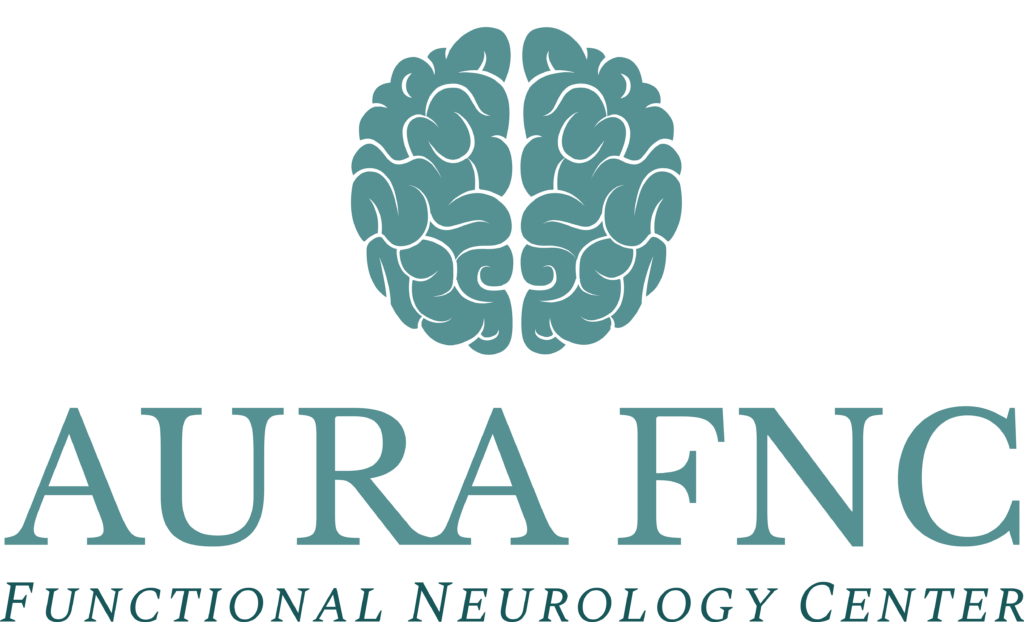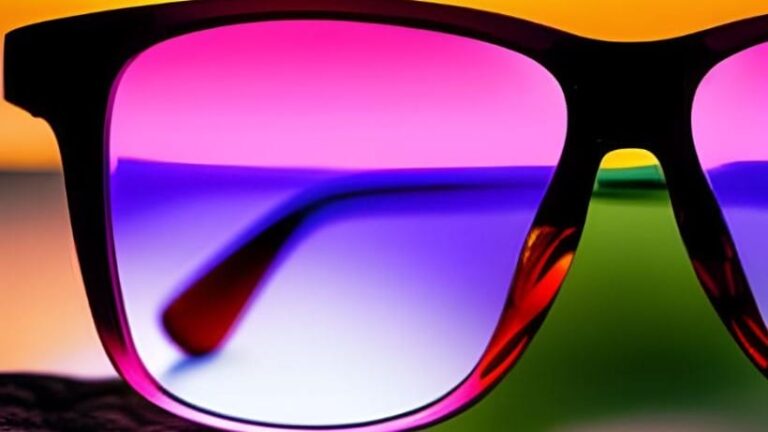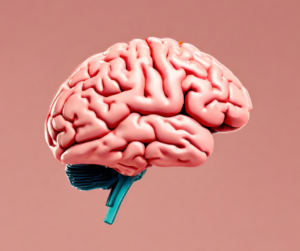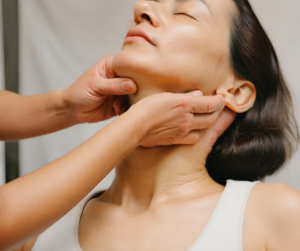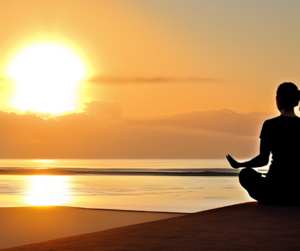There are natural and holistic ways to try to manage a migraine from home according to Dr. Diana Tyler. This article will cover common acute migraine management strategies and provide valuable insight into research on this topic.

Dr. Diana Tyler DC, DACNB
Founder of Aura Functional Neurology Center. Board Certified Chiropractic Neurologist and migraine specialist. Graduate of Palmer College of Chiropractic and Diplomate of the American Chiropractic Neurology Board.
There are natural and holistic ways to try to manage a migraine from home. This article will cover common acute migraine management strategies and provide valuable insight into research on this topic.
Table of Contents:
- Relieving migraines without medication
- What is a migraine?
- Try a cold pack
- Dim the lights
- Hydrate consistently
- Get some caffeine
- Take some ginger
- Regulate your sleep
- Remove head pressure
- Try massage therapy
- Breathing exercises
Relieving Migraines Without Medication
Are you looking for ways to relieve migraine headaches without relying on medication or drugs? There are several effective methods you can try to help alleviate the acute pain.
One approach used for migraine in a study was to use a cold compress on your head. Applying a cold pack or ice pack to your head and front neck can help numb the area and reduce inflammation, providing relief from headache symptoms without pain-alleviating drugs.
Another technique is to remove pressure from your head. Tight headbands, hats, or any constriction around your head can exacerbate a headache. Loosening or removing these items can help relieve the pressure and reduce the intensity of the headache decreasing the need for medicine. For those who are sensitized in the cervical spine and head region, this can provide sustained headache relief.
Turning down the lights or creating a dimly lit environment can also be beneficial for migraine headaches. Bright light can trigger or worsen migraines in some individuals, so creating a soothing and less intense visual environment can help ease the pain and make the environment more manageable without abortive medicine available.
By using these methods, you may be able to find relief from headaches without the use of medication or drugs. However, if the headaches persist or worsen: it’s important to consult with a healthcare professional for proper diagnosis and treatment.
What is a Migraine?
Migraine is a neurological disorder characterized by recurrent headaches and other neurological migraine symptoms that can progress from dull mild pain to moderate intensity to severe in intensity. There are several different types of migraines depending on family history including migraine with aura (often bilateral visual migraine), migraine without aura, abdominal migraine, basilar-type migraine, hemiplegic migraine with stroke-like symptoms, episodic migraine, vestibular migraine, chronic migraine, ophthalmic migraine with visual symptoms, and menstrual migraine triggered by the menstrual cycle. For migraine in adults, a health care provider gathers patient history and examines it to diagnose the migraine type and needed intervention and to distinguish between migraine and other types of headaches such as cluster headaches and tension headaches.
Often patients are looking for alternative and holistic treatments due to experiencing medication overuse headaches in the past. It is important to address migraines early and consider holistic and alternative treatments to alleviate symptoms and prevent future migraine headache episodes. These treatments may include preventive medication or supplements, and lifestyle modifications, such as managing stress, getting enough sleep, and maintaining a healthy diet. Additionally, techniques like relaxation exercises, acupuncture, chiropractic care, massage therapy, vestibular therapy, brain rehabilitation, and biofeedback have shown promising results in managing migraines without relying solely on single doses of acute therapies.
By understanding the different types of migraines and exploring alternative treatments, individuals can take a proactive approach to managing their migraines and improve their quality of life to provide sustained headache relief through the reduction in pain intensity.
Migraine causes functional disability
Migraine is not just a headache, but rather a debilitating neurological condition associated with symptoms of a persistent recurrence of headache: “Migraine is associated with moderate to severe functional disability. The frequency of migraine has a positive correlation with the levels of disability/migraine disability assessment scores of migraineurs (Renjith V et al., 2016)”. This explains why under the American Disabilities Act (ADA), having migraines may be considered a functional disability if it affects your ability to complete one or more major life activities. The basic functions that we often take for granted like working, processing, communicating, or focusing are examples of functional disability.
References:
Renjith V, Pai MS, Castelino F, Pai A, George A. Clinical profile and functional disability of patients with migraine. J Neurosci Rural Pract. 2016 Apr-Jun;7(2):250-6. doi 10.4103/0976-3147.176188. PMID: 27114657; PMCID: PMC4821934. https://www.ncbi.nlm.nih.gov/pmc/articles/PMC4821934/
Functional disability affects an individual’s ability to perform normal daily activities due to uncontrolled migraine symptoms. This can include reduced productivity at work and difficulty performing household tasks at varying levels depending on the type of migraine. How this may look up to others is inconsistent job attendance or unscheduled absences; the need to leave the office or be driven home due to the chronic migraine and associated functional disability.
Functional disability can impact a person’s quality of life and should be addressed in treatment. Functional disability is common even when utilizing many interventions for most patients. This can include lifestyle changes, such as improving sleep hygiene and stress management, as well as other treatments for migraine management.
Migraine is a complex neurological disorder that affects millions of people worldwide. It is important to recognize the impact it has on an individual’s quality of life and ways to manage an acute migraine attack, we also want to treat the underlying source or root cause of migraine disease to help manage the disability at baseline.
Migraine management
The goal of migraine management is to reduce the frequency, duration, and intensity of headaches to decrease or eliminate functional disability. This can be done through lifestyle modifications such as getting adequate sleep, reducing stress levels, and avoiding triggers. Additionally, preventive medications can be prescribed to help reduce the frequency of migraines and associated functional disability symptoms. These can include migraine preventive medications such as beta-blockers, calcium channel blockers, and tricyclic antidepressants as well as single doses of acute therapies of prophylactic medications for prodrome during an acute migraine attack. A study in 2013 showed that: “Nearly all migraineurs (98%) used acute treatments for attacks, with 49% using over‐the‐counter (OTC) medication only, 20% using prescription medication, and 29% using both. (Law S., et al., 2013). What we know about these nonsteroidal anti-inflammatory drugs (NSAIDs) one can start to experience rebound headaches.
References:
Law S, Derry S, Moore RA. Naproxen with or without an antiemetic for acute migraine headaches in adults. Cochrane Database Syst Rev. 2013 Oct 20;2013(10): CD009455. doi: 10.1002/14651858.CD009455.pub2. PMID: 24142263; PMCID: PMC6540401.https://www.ncbi.nlm.nih.gov/pmc/articles/PMC6540401/
For those looking for a holistic treatment for migraine and associated functional disability, study after study shows how migraine has been implicated as a metabolic disorder, contains mitochondrial dysfunction, involves food sensitivities, is sometimes associated with the underlying sick-building syndrome, and most importantly functional and structural differences in the brain and close association to dysautonomia. In this article, we will cover common holistic acute migraine remedies that will not contribute to medication overuse headaches.
Try a Cold Pack
When it comes to finding holistic treatments for migraines, one simple and effective method to try is the analgesic power of a cold pack. In the history of migraine study: “The treatment of migraine with cold therapy has been used for over 150 years (Sprouse-Bum AS et al., 2013).” This natural remedy can help relieve the pain and discomfort associated with a migraine headache.
To use a cold pack for treatment of migraines, start by placing the pack on the front of the neck, where it can help constrict blood vessels and reduce inflammation. Studies on migraine and cold pack use showed that route of administration can make a difference in relief: “application of a frozen neck wrap at the onset of migraine headache targeting the carotid arteries at the neck significantly reduced recorded pain in participants with migraine headaches (Sprouse-Bum AS et al., 2013).”
References:
Sprouse-Blum AS, Gabriel AK, Brown JP, Yee MH. Randomized controlled trial: targeted neck cooling in the treatment of the migraine patient. Hawaii J Med Public Health. 2013 Jul;72(7):237-41. PMID: 23901394; PMCID: PMC3727573.https://www.ncbi.nlm.nih.gov/pmc/articles/PMC3727573/
It is recommended to apply the cold pack for 15 minutes, followed by a 15-minute break. This alternating approach can provide the best results. There are different options for cold packs that you can use. An ice pack is a common choice, as its cold temperature can effectively numb the pain and serve as a holistic analgesic. Alternatively, you can use a bag of frozen vegetables or even take a cold shower to achieve a similar effect.
By incorporating a cold pack into your holistic migraine treatment plan, you can experience some relief from the intensity of the pain. Remember to listen to your body and adjust the duration and frequency of the cold pack application based on your individual needs and comfort.
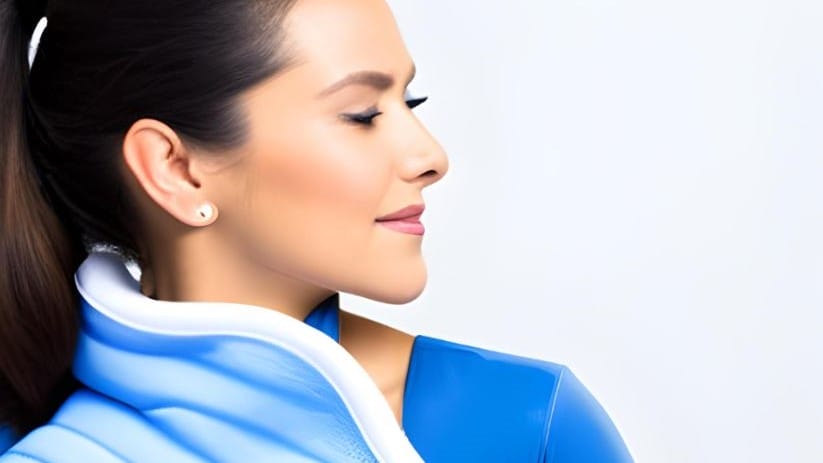
Dim the Lights
Dimming the lights can provide significant relief for those suffering from migraines. Bright light, especially flickering light, can be a rare trigger for those with different types of headaches but nearly for all migraine sufferers. Taking measures to reduce exposure to bright light can help prevent or alleviate symptoms.
One effective way to dim the lights is by covering windows with blackout curtains that allow to decrease any source of light. These curtains block out sunlight during the day, creating a darker environment that is less likely to trigger migraines. This can be difficult to perform when at work, which is an example of one functional disability.
When going outdoors, wearing sunglasses with FL 41 lenses can help reduce sensitivity to bright light. A study on these lenses found that: “FL-41 tinted spectacle lenses reduced migraine frequency from 6.2 to 1.6 per month in a cohort of children with migraines (Hoggan RN et al., 2016)”.
References:
Hoggan RN, Subhash A, Blair S, Digre KB, Baggaley SK, Gordon J, Brennan KC, Warner JE, Crum AV, Katz BJ. Thin-film optical notch filter spectacle coatings for the treatment of migraine and photophobia. J Clin Neurosci. 2016 Jun;28:71-6. doi: 10.1016/j.jocn.2015.09.024. Epub 2016 Feb 28. PMID: 26935748; PMCID: PMC5510464. https://www.ncbi.nlm.nih.gov/pmc/articles/PMC5510464/
In addition to controlling external light sources, it’s crucial to manage the brightness of electronic devices. Using anti-glare screens on laptops, tablets, and phones for study or work or at bed rest times can minimize the strain on the eyes caused by screen glare, which can trigger migraines in some individuals. There are many benefits to the whole body from having appropriate melatonin production.
When a migraine attack occurs, resting in a dark or dimly lit room with an ice pack and much-needed bed rest is essential. Dimming the lights in the room can help to relieve sensitivity to light, and create a soothing and calm environment, individuals can find relief from the pain and discomfort associated with migraines.
Hydrate Consistently
Staying hydrated is crucial in managing and alleviating headaches, including chronic migraines. Dehydration is a common trigger for migraines, making it important to drink plenty of water throughout the day.
By maintaining optimal hydration levels, you can prevent the onset of migraines. It is especially essential to increase water intake on hot days or during physical activities that cause excessive sweating. When you sweat, your body loses water and electrolytes, which can contribute to dehydration and potentially trigger migraines.
In addition to drinking plain water, incorporating electrolyte-rich beverages can be beneficial if you are sweating heavily. Electrolytes, such as sodium, potassium, and magnesium, help to maintain the balance of fluids in your body and support proper nerve and muscle function, which can help prevent severe headaches.
Remember that prevention is key when it comes to migraines, and staying hydrated plays a critical role in reducing the frequency and severity of migraines. So make sure to drink plenty of water throughout the day, especially in hot weather or during physical exertion, to keep yourself properly hydrated and minimize the likelihood of migraines.
Water and brain function
Water is crucial for survival and has a direct impact on the body and the brain. One study showed that: “Water accounts for 75% of brain mass. Associations may exist between hydration and cognitive performance (Zhang N. et al., 2019).” If water intake in this study can show a positive correlation between hydration and the ability to use the cortex- this becomes important information when considering the involvement of the frontal cortex, DMN, limbic system, and brainstem in migraine attacks. There are many interventions for migraine, but this one is simple yet so difficult to follow for most of us.
Reference:
Zhang N, Du SM, Zhang JF, Ma GS. Effects of Dehydration and Rehydration on Cognitive Performance and Mood among Male College Students in Cangzhou, China: A Self-Controlled Trial. Int J Environ Res Public Health. 2019 May 29;16(11):1891. doi 10.3390/ijerph16111891. PMID: 31146326; PMCID: PMC6603652. https://www.ncbi.nlm.nih.gov/pmc/articles/PMC6603652/
It is well-known that water is essential for proper bodily functions, but it may also play a role in brain health. Adequate hydration helps to maintain the balance of fluids in the body and supports neurological processes. Studies have found that dehydration can lead to decreased alertness and cognitive performance, making it important to ensure adequate hydration levels.
There are various ways to increase
Get Some Caffeine
If you’re looking for a way to get rid of migraines without medication, incorporating caffeine for the acute treatment of migraines may provide some relief. Caffeine has been known to have mild pain-relieving properties, making it a popular choice for those suffering from migraine pain.
When consumed in moderate amounts, caffeine can enhance the effectiveness of migraine medications. It works by constricting blood vessels in the brain, which can help alleviate the throbbing pain associated with migraines. Additionally, caffeine can impact the route of administration and absorption of pain relievers, allowing them to work more efficiently.
However, it’s important to be mindful of the potential risks of caffeine dependency and withdrawal symptoms. For many it is an unclear risk to learn that regular consumption of caffeine can lead to dependence in migraine, making it necessary to consume more to achieve the desired effect. Abruptly stopping caffeine intake can result in withdrawal symptoms such as headaches, fatigue, and irritability. Caffeine abuse or dependence can be similar to medication overuse headaches, causing viscous severe pain and rebound headaches. It is important to weigh out the pros and cons of caffeine consumption and to calculate the risk ratio.
It’s also worth noting that while caffeine may provide temporary relief, it does not address the underlying cause of migraines. Therefore, it’s essential to seek professional medical advice for long-term management.
In conclusion, incorporating caffeine into your routine can provide mild relief and enhance the effectiveness of migraine medications. Remember to consult with your healthcare provider for personalized advice on managing migraines.
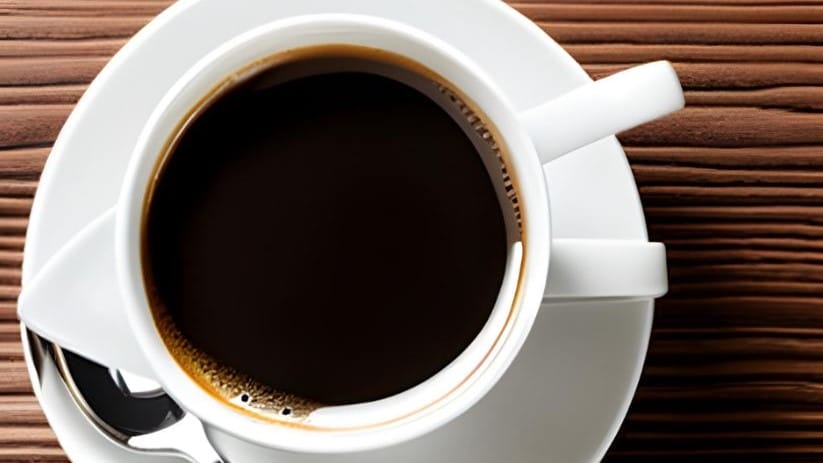
Take Some Ginger
One natural remedy that has been found to provide relief for migraine pain is ginger. Ginger has long been used for its medicinal properties and has shown promise in easing various health conditions, including migraines and blood pressure.
Ginger is particularly beneficial as an active intervention for relieving the nausea that often accompanies migraines. The additional benefit it can help calm the stomach and reduce the urge to vomit from a severe-intensity migraine, providing much-needed comfort during a migraine attack. Additionally, it helps with nausea but also contains pain-relieving properties that can help alleviate the intensity of migraine headaches for each attack.
There are several ways to consume ginger for migraine relief instead of prophylactic medication. One option is to take a ginger supplement, which is available in many health food stores. Swallowing capsules can be difficult as a single dose for some when experiencing extreme nausea. Another option for ginger consumption found in a study was to: “stir half a teaspoon of ground ginger into a glass of water and to drink this “ginger juice”; another is to drink a hot tea made from a teaspoon of freshly ground ginger (Andrade C. et al., 2021).” This can be enjoyed plain or mixed with other herbal teas such as peppermint, chamomile, or lavender, which also have soothing properties for relief of nausea.
How effective is ginger for migraine? One study found that in 100 selected patients with an acute migraine with no aura found that the: “Efficacy of ginger powder and sumatriptan was similar (Maghbooli M. et al., 2013). This provides a great acute therapy treatment method for those who want to manage migraine without medication or drug use.
References:
Andrade C. Ginger for Migraine. J Clin Psychiatry. 2021 Nov 30;82(6):21f14325. doi 10.4088/JCP.21f14325. PMID: 34851560.https://www.psychiatrist.com/jcp/neurologic/migraine/ginger-for-migraine/
Maghbooli M, Golipour F, Moghimi Esfandabadi A, Yousefi M. Comparison between the efficacy of ginger and sumatriptan in the ablative treatment of the common migraine. Phytother Res. 2014 Mar;28(3):412-5. doi: 10.1002/ptr.4996. Epub 2013 May 9. PMID: 23657930. https://pubmed.ncbi.nlm.nih.gov/23657930/
Natural remedies and treatments for migraines are an essential part of treatment, as they don’t contribute to rebound headaches such as medication overuse headaches do. While ginger can be effective in providing relief for chronic and episodic migraines, it is important to note that it may not work for everyone and that larger studies can always benefit migraine research. Each individual’s response to ginger may vary, and it is always recommended to consult with a healthcare provider for personalized advice and treatment options.
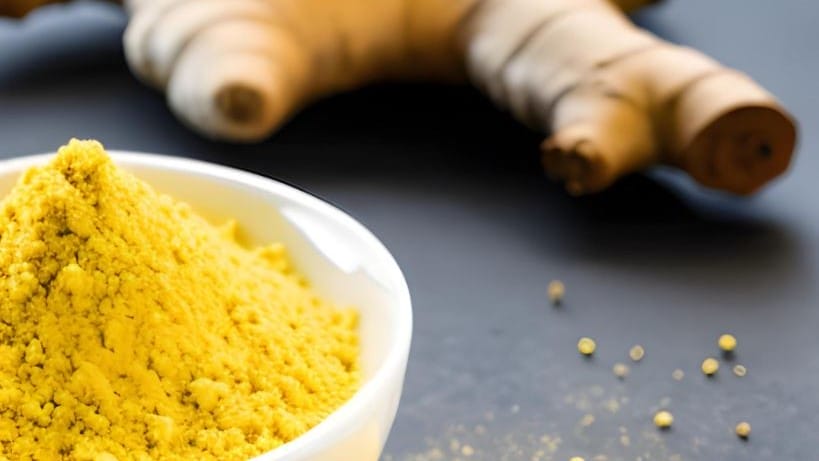
Regulate Your Sleep
For migraine in adults especially those raising young children, sleep plays a crucial role in the preventive treatment of migraines and improving overall health and well-being. Adequate sleep is essential for maintaining a healthy body and mind, and it can significantly impact the frequency and intensity of migraine attacks.
In people with migraines, inadequate sleep has been linked to an increased susceptibility to headache pain and neurological symptoms especially in those with migraine with aura. This is based on the cortical spreading depression that contributes to aura: “Acute but not chronic sleep deprivation enhances CSD susceptibility in rodents, possibly underlying its negative impact as a migraine trigger and exacerbating factor (Negro A. et al., 2020).”
References:
Negro A, Seidel JL, Houben T, Yu ES, Rosen I, Arreguin AJ, Yalcin N, Shorser-Gentile L, Pearlman L, Sadhegian H, Vetrivelan R, Chamberlin NL, Ayata C, Martelletti P, Moskowitz MA, Eikermann-Haerter K. Acute sleep deprivation enhances susceptibility to the migraine substrate cortical spreading depolarization. J Headache Pain. 2020 Jul 6;21(1):86. doi 10.1186/s10194-020-01155-w. PMID: 32631251; PMCID: PMC7339460.
When we don’t get enough sleep, our body’s stress response system, known as the HPA axis, becomes overactive. This can trigger inflammation and disrupt the balance of neurotransmitters in the brain, leading to a higher risk of different migraine types. A study found possible: ” hyperdopaminergic state in patients with CM (Peres MF et al., 2001).
In a study on migraine headaches and hypothalamus involvement, they assessed the risk of sleep dysfunction triggering an acute migraine. The study found the following correlations in those with Chronic Migraines: “An abnormal pattern of hypothalamic hormonal secretion was found in CM. This included: (1) a decreased nocturnal prolactin peak, (2) increased cortisol concentrations, (3) a delayed nocturnal melatonin peak in patients with CM, and (4) lower melatonin concentrations in patients with CM with insomnia (Peres MF et al., 2001).”
References:
Peres MF, Sanchez del Rio M, Seabra ML, Tufik S, Abraham J, Cipolla-Neto J, Silberstein SD, Zukerman E. Hypothalamic involvement in chronic migraine. J Neurol Neurosurg Psychiatry. 2001 Dec;71(6):747-51. doi: 10.1136/jnnp.71.6.747. PMID: 11723194; PMCID: PMC1737637. https://www.ncbi.nlm.nih.gov/pmc/articles/PMC1737637/
How to optimize sleep and minimize the risk of migraine
To optimize sleep quality and minimize the occurrence of migraine in adults, it is recommended to aim for 7 to 8 hours of sleep each night and establish a regular sleep schedule with the same bedtime and wake-up time as prophylactic therapy. This helps regulate the body’s internal clock and promotes healthy sleep patterns.
Creating a relaxing bedtime routine can also improve sleep quality and act as a preventative treatment for migraine. Engaging in activities such as reading a book, taking a warm bath, or practicing relaxation techniques can signal to the body that it’s time to wind down and prepare for sleep.
Avoiding stimulants like caffeine and electronic devices before bedtime is important as they risk interfering with falling asleep easily. Creating a sleep-friendly environment by minimizing distractions in the bedroom, such as excessive noise or bright lights, can also contribute to better sleep.
If you’re unable to fall asleep easily, it’s important not to force it. Instead, try engaging in a quiet and calming activity until you feel sleepy.
By prioritizing healthy sleep habits and incorporating these practical tips, you can improve sleep quality and potentially reduce the frequency and severity of migraines. However, it’s always advisable to consult with a healthcare professional for personalized advice and additional treatment options.
Remove Head Pressure
When it comes to finding relief from migraines, it’s not just about what you can do to alleviate the pain, but also what you can use as a preventive treatment. One often overlooked factor that can contribute to migraines is external pressure on the head.
There are several possible sources of pressure on the head that can trigger external compression headaches. These include tight ponytails, buns, hats, headbands, and even swimming goggles. It’s important to identify and remove any of these factors if you suspect they may be causing your headaches.
External compression headaches can also be caused by physical pressure on the scalp or head for extended periods. This could be from wearing a hat that is too tight or even from resting your head against a hard surface for a long time.
To help prevent external compression headaches, it’s important to be mindful of any tight hairstyles or accessories that may be exerting pressure on your head. Opt for looser hairstyles and avoid wearing any headgear that feels too tight. By removing any pressure on the head, you can potentially reduce the occurrence of external compression headaches and improve your overall migraine management.
What is a ponytail headache?
A ponytail headache is a type of external compression headache caused by tight hairstyles, such as a high ponytail or bun. These hairstyles pull and press on the scalp, resulting in tension headaches that can often be mistaken for migraines. Symptoms of a ponytail headache include pain at the back of the neck, behind the eyes, or around the temples.
Try Massage Therapy
Massages, while typically thought of as something given by a professional, can easily be done yourself as a treatment for migraines. A few minutes of gentle massage to the forehead, neck, and temples can make a huge difference in easing tension headaches and other stress-related issues. When applying the massage, make sure to use light pressure and apply it in small rotating motions so you don’t aggravate or further worsen an already inflamed area.
Whether you choose to give yourself the massage or enlist the help of a professional such as a masseuse or physical therapist, the results will show fairly quickly. The massage should be done at least for several minutes regardless of whether it is done professionally or at home; this will increase circulation and relax your muscles allowing for maximum relief from pain and tension.
Massaging helps relax muscles which are usually the cause of muscle spasms leading to pain throughout your body and may be helpful for the treatment of headache pain. It also helps reduce stress which can worsen any current physical ailments you might have
Migraine and trigger points
Trigger points are localized areas of tenderness in the muscles that often cause referred pain to other parts of the body. Trigger points can be found throughout the body and can be associated with headaches, including migraines. A study found that: “Myofascial trigger points are prevalent in both migraine and tension-type headache but the role they play in the pathophysiology of each disorder and to which degree is unclarified (Do TP., et al., 2018).” An interesting correlation is made in the study between trigger points and autonomic (brainstem) symptoms: “The spot is painful on compression and can cause referred pain, referred tenderness, motor dysfunction, and autonomic phenomena (Do TP., et al., 2018).”
References:
Do TP, Heldarskard GF, Kolding LT, Hvedstrup J, Schytz HW. Myofascial trigger points in migraine and tension-type headache. J Headache Pain. 2018 Sep 10;19(1):84. doi 10.1186/s10194-018-0913-8. PMID: 30203398; PMCID: PMC6134706.https://www.ncbi.nlm.nih.gov/pmc/articles/PMC6134706/
Breathing Exercises
Relaxation techniques can be an important way to help reduce the feelings of stress and anxiety as an intervention to help during severe intensity migraine attacks. By engaging in practices such as deep-belly breathing, stimulation from guided meditations, and muscle relaxation exercises, one can use this as prophylactic therapy- to learn how to breathe through tough emotions and focus on calming their body which can help reduce a common trigger of migraine which is stress.
Deep-belly breathing involves relaxing muscles to slow down breathing while guiding kids’ thoughts towards something calming. With guided meditations, practice mindfulness by focusing on the breath while being aware of the thoughts and body. Active muscle relaxation encourages you to focus on different parts of your body individually to loosen up any tension you may have from stressful situations.
Learning relaxation techniques is a great tool for helping those with migraine to gain control over stress and anxiety.
Summary
Migraine is a complex neurological condition with an associated functional disability that may respond to various holistic modalities at home. It is important to note that individual attacks have different driving forces, and needed migraine-active interventions can be complex. Some ways we use natural remedies to help a migraine without medication are listed above to try to achieve a headache relief outcome.
